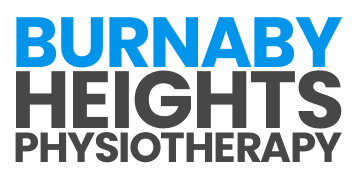
Physiotherapy for Vertigo: Regain Balance and Reduce Dizziness
October 17, 2024
Improving Fitness and Function: The Benefits of Physiotherapy
November 15, 2024Physiotherapy exercises play a crucial role in helping individuals recover from injuries, manage chronic conditions, and improve overall physical function. Whether you’re dealing with back pain, knee discomfort, or just want to strengthen your core, these exercises are designed to target problem areas and promote healing. By integrating physiotherapy exercises into your daily routine, you can not only alleviate pain but also enhance your mobility, flexibility, and strength. In this guide, we’ll explore the role of physiotherapy exercises, specific routines for common issues, and tips for performing them safely at home.
Physiotherapy Treatment: The Role of Exercise
Physiotherapy exercises are designed to restore movement, strength, and flexibility in areas of the body affected by injury, surgery, or chronic conditions. They are often an integral part of a personalized treatment plan developed by a physiotherapist, who assesses your specific needs and creates exercises that target your condition. The primary goal of these exercises is to help improve your body’s function, whether it’s alleviating pain, rebuilding strength, or increasing range of motion.
These exercises can include a wide range of activities such as stretching, strengthening, and mobility exercises. Depending on your condition, your physiotherapist may incorporate exercises that focus on specific muscles or joints. For example, if you’re recovering from a knee injury, exercises might include leg raises and quad-strengthening movements. For those with shoulder issues, exercises may involve resistance band work to improve shoulder stability and strength.
In addition to recovery, physiotherapy exercises can be used for injury prevention. Regularly performing targeted exercises can help correct muscle imbalances, improve posture, and enhance coordination—all of which reduce the likelihood of future injuries. Importantly, physiotherapy exercises are not a quick fix; they are part of a long-term strategy for maintaining health and preventing the recurrence of issues.
Managing Lower Back Pain: Recommended Physiotherapy Exercises
Lower back pain is one of the most common conditions treated by physiotherapists. It can be caused by poor posture, muscle imbalances, or injuries such as disc herniations or muscle strains. Physiotherapy exercises for lower back pain are designed to alleviate discomfort and improve flexibility and strength in the lower back and surrounding areas.
Here are some effective physiotherapy exercises for managing lower back pain:
- Pelvic Tilts: This gentle movement helps relieve tension in the lower back and strengthens the abdominal muscles. Lie on your back with your knees bent, tighten your stomach muscles, and flatten your lower back against the floor. Hold the position for a few seconds before relaxing.
- Bridges: A great exercise for strengthening the glutes, lower back, and hamstrings. Lie on your back with your knees bent and feet flat on the floor. Lift your hips off the floor while keeping your shoulders grounded. Hold for a few seconds, then slowly lower your hips back down.
- Cat-Cow Stretch: This yoga-inspired stretch increases flexibility in the spine and helps relieve lower back tension. Start on your hands and knees. Arch your back upwards (Cat pose), then slowly drop your belly and lift your chest (Cow pose). Repeat several times in a smooth, controlled manner.
- Knee-to-Chest Stretch: This stretch helps relax the lower back muscles. While lying on your back, bring one knee up toward your chest and hold it with both hands. Gently pull your knee closer, hold for 15-30 seconds, and switch sides.
These exercises focus on strengthening the muscles that support your lower back while improving flexibility, reducing the likelihood of future pain episodes. Always consult with your physiotherapist to ensure these exercises are appropriate for your condition.
How Often Should I Do Physiotherapy Exercises for Optimal Results?
Consistency is key when it comes to physiotherapy exercises. The frequency of your exercises will depend on the specific recommendations from your physiotherapist, the severity of your condition, and your personal goals. In general, most physiotherapists recommend performing exercises daily or several times a week for optimal results.
For acute injuries or post-surgical recovery, exercises may need to be performed more frequently, sometimes multiple times per day, especially in the initial stages of rehabilitation. This helps to maintain mobility, reduce stiffness, and promote healing. As your condition improves, the frequency may decrease, but consistency remains important to maintain progress.
For chronic conditions, such as lower back pain or arthritis, maintaining a routine of physiotherapy exercises a few times a week can help manage symptoms and prevent flare-ups. These exercises should become part of your long-term health routine, similar to regular exercise or stretching.
Strengthening the Core: Essential Physiotherapy Exercises
A strong core is essential for overall body stability, posture, and injury prevention. Core muscles include not only the abdominal muscles but also the muscles in the back, pelvis, and hips. Physiotherapy exercises that focus on the core can help improve balance, reduce lower back pain, and enhance athletic performance. Here are some of the best core-strengthening exercises commonly recommended by physiotherapists:
- Planks: One of the most effective exercises for building core strength, planks engage multiple muscles at once. Begin in a push-up position, with your forearms resting on the ground and your body forming a straight line from head to heels. Hold this position for as long as you can while keeping your core tight.
- Dead Bug: This exercise is excellent for building abdominal strength while protecting the lower back. Lie on your back with your arms extended toward the ceiling and your knees bent at a 90-degree angle. Slowly lower one arm and the opposite leg toward the floor while keeping your back flat against the mat, then return to the starting position.
- Bird Dog: A great exercise for strengthening the core and improving balance. Start on your hands and knees, then extend one arm forward while extending the opposite leg straight behind you. Hold for a few seconds, then switch sides.
- Side Planks: Similar to the standard plank, the side plank targets the oblique muscles. Lie on your side with your elbow directly beneath your shoulder. Lift your hips off the ground, forming a straight line from head to feet, and hold for as long as you can.
These core exercises are effective for building strength in the abdominal muscles, as well as the lower back, hips, and pelvis. They can be modified depending on your fitness level and adjusted as your strength improves over time.
Tips for Performing Physiotherapy Exercises Safely
Performing physiotherapy exercises at home can be a great way to complement in-clinic treatments and maintain progress. However, to ensure you’re performing exercises correctly and safely, it’s important to follow a few essential guidelines:
- Follow Your Physiotherapist’s Plan: Always stick to the exercise routine prescribed by your physiotherapist. They’ve created this plan specifically for your condition, and deviating from it may lead to ineffective results or injury.
- Warm Up Beforehand: Just as with any physical activity, warming up before physiotherapy exercises is crucial. Gentle movements like walking or light stretching help increase blood flow to the muscles and reduce the risk of strain.
- Focus on Form: Proper form is key to gaining the full benefits of physiotherapy exercises and avoiding injury. Use a mirror if necessary to ensure your posture and movements are correct. If you’re unsure about your form, consult your physiotherapist before continuing.
- Start Slow and Gradually Increase Intensity: If you’re just starting or dealing with pain, begin with fewer repetitions or less resistance. Over time, as your strength and mobility improve, you can gradually increase the intensity of your exercises.
- Stay Mindful of Pain: Some mild discomfort during physiotherapy exercises is normal, but sharp pain is a sign that something may be wrong. Stop immediately if you feel pain and consult your physiotherapist for guidance.
By following these tips, you can safely perform your physiotherapy exercises at home, ensuring continued progress in your recovery or health maintenance journey.
Physiotherapy Exercises for Knee Pain
Knee pain is a common issue caused by conditions such as arthritis, ligament injuries, or overuse. Physiotherapy exercises that target the knee are designed to relieve pain, improve mobility, and strengthen the surrounding muscles to provide better joint support. Here are some of the most effective physiotherapy exercises for managing knee pain:
- Quadriceps Sets: This simple exercise strengthens the quadriceps, the large muscles in the front of the thigh, which support the knee. Sit or lie down with your legs straight. Tighten the muscles on the front of your thigh and push the back of your knee down toward the floor. Hold for a few seconds and release.
- Straight Leg Raises: This exercise helps build strength in the quadriceps without putting stress on the knee joint. Lie on your back with one knee bent and the other leg straight. Lift the straight leg about 30 cm off the ground, hold for a few seconds, and then lower it back down.
- Hamstring Curls: Strengthening the hamstrings (the muscles on the back of the thigh) helps stabilize the knee. Stand up and hold onto a surface for support. Bend one knee, bringing your heel toward your buttocks. Hold for a few seconds and lower your leg back down.
- Wall Squats: Wall squats are excellent for building overall leg strength while minimizing stress on the knee joint. Stand with your back against a wall and slowly slide down as if you’re sitting into a chair, then hold the position for a few seconds before returning to standing.
These exercises focus on strengthening the muscles around the knee, particularly the quadriceps and hamstrings, which are key for reducing pain and improving knee function. Always consult with your physiotherapist to ensure these exercises are suitable for your specific condition.
Healing Through Movement
Ready to take charge of your recovery and well-being? Incorporating physiotherapy exercises into your daily life can make a significant difference in managing pain, improving mobility, and preventing future injuries. At Burnaby Heights Physiotherapy, our team is here to provide personalized guidance and support tailored to your unique needs. Contact us today to schedule an appointment and begin your journey to a healthier, more active life! Don’t wait—let us help you feel your best through targeted physiotherapy exercises and dedicated care.






